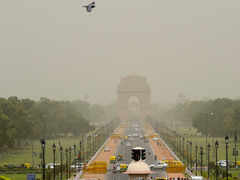
NEW DELHI: A report by the Central Pollution Control Board (CPCB) has revealed that the pollution levels in Delhi’s 13 pollution hotspots have witnessed a significant decline. According to the Board, restrictions on industrial activities and traffic movement is the main cause for the cleaner air.
The 13 hotspots have been identified by the Government of Delhi based on the annual average PM10 and PM2.5 levels. These are Okhla Phase-II, Dwarka, Ashok Vihar, Bawana, Narela, Mundka, Punjabi Bagh, Wazirpur, Rohini, Vivek Vihar, Anand Vihar, R K Puram and Jahangirpuri.
CPCB said that it analysed air quality data in three stages namely, pre-lockdown (March 1-21), lockdown phase-I (March 25-April 19) and lockdown phase-II (April 20-May 3). In order to make results more representative of the change in air quality levels, CPCB also compared the pollution levels with those for corresponding time periods in 2019. The reduction in PM2.5 levels varied from 54 per cent in Jahangirpuri to 26 per cent in Punjabi Bagh. Dwarka, an area with a significant number of residential and institutional sites responsible for considerable traffic movement, recorded a 50 per cent decline in PM2.5 levels.
“The results affirm that traffic restrictions and closure of commercial areas were instrumental in improving air quality,” the CPCB said. Restriction on operations in industries in Mundka resulted in a 38 per cent reduction in PM2.5 levels in the first phase of lockdown. CPCB also said that there was noted presence of data gaps in the case of Anand Vihar and Narela. However, despite this, the two areas recorded a significant decrease in PM2.5 levels for the days on which data was available.
A similar trend was seen in the PM10 levels in these areas. In Dwarka, Mundka and Wazirpur, the PM10 levels declined by over 60 per cent during the lockdown periods. The CPCB attributes this drop primarily to the reduction in road dust re-suspension caused by minimal vehicular movement and restriction on all construction and demolition activities.
Except Jahangirpuri, all other hotspots also witnessed a drop in nitrogen dioxide (NO2)levels as compared to 2019. Meanwhile, other areas experienced a drop of over 70 per cent in concentration of NO2 during the lockdown periods as against 2019 levels.

